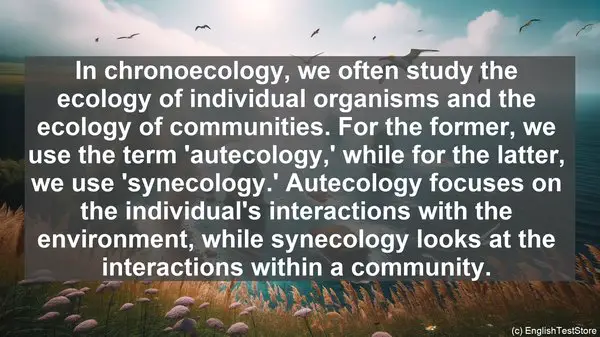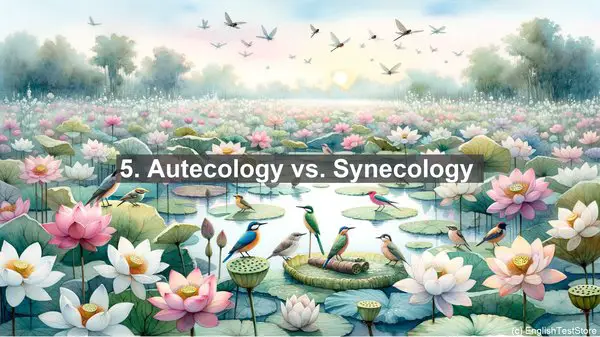Introduction to Chronoecology
Before diving into the commonly confused words, let’s have a quick introduction to chronoecology. It is the study of the interaction between organisms and their environment over time. This field is crucial in understanding how ecosystems change and adapt.
1. Chronology vs. Chronoecology
The first confusion arises between ‘chronology’ and ‘chronoecology.’ While ‘chronology’ refers to the arrangement of events in the order of their occurrence, ‘chronoecology’ focuses on the ecological aspects of these events. So, while ‘chronology’ is about time, ‘chronoecology’ is about time in relation to ecology.

2. Synchronous vs. Diachronous
Another pair of words that often leads to confusion is ‘synchronous’ and ‘diachronous.’ ‘Synchronous’ means events happening at the same time, while ‘diachronous’ refers to events occurring at different times. In chronoecology, understanding whether events are synchronous or diachronous is crucial in deciphering ecological patterns.
3. Anachronistic vs. Synchronic
Next, we have ‘anachronistic’ and ‘synchronic.’ ‘Anachronistic’ refers to something that is chronologically out of place, while ‘synchronic’ means something happening at the same time. In chronoecology, we often encounter fossils or species that are considered anachronistic, as they exist in a time period different from their counterparts.
4. Paleochronology vs. Paleontology
Moving on, ‘paleochronology’ and ‘paleontology’ are two terms that are sometimes used interchangeably, but they have distinct meanings. ‘Paleochronology’ deals with the dating of past events, while ‘paleontology’ is the study of fossils and ancient life forms. While they are related, they focus on different aspects of the past.
5. Autecology vs. Synecology
In chronoecology, we often study the ecology of individual organisms and the ecology of communities. For the former, we use the term ‘autecology,’ while for the latter, we use ‘synecology.’ Autecology focuses on the individual’s interactions with the environment, while synecology looks at the interactions within a community.
6. Taphonomy vs. Stratigraphy
When it comes to studying fossils and their preservation, ‘taphonomy’ and ‘stratigraphy’ are two important concepts. ‘Taphonomy’ deals with the processes that affect an organism’s remains after death, while ‘stratigraphy’ is the study of rock layers and their arrangement. Both are essential in reconstructing past environments.
7. Ecotone vs. Ecocline
The terms ‘ecotone’ and ‘ecocline’ are often used in chronoecology to describe different types of environmental transitions. An ‘ecotone’ is a boundary between two distinct ecosystems, while an ‘ecocline’ refers to a gradual change in environmental conditions over a geographic area. Understanding these terms helps us analyze ecological gradients.
8. Paleoecology vs. Neoecology
While ‘paleoecology’ focuses on studying ancient ecosystems, ‘neoecology’ deals with modern or current ecosystems. Both are important in understanding ecological processes, but they differ in the time frame they consider. By comparing the two, we can gain insights into how ecosystems have changed over time.

9. Allochronic vs. Synchronic
When studying species, we often encounter terms like ‘allochronic’ and ‘synchronic.’ ‘Allochronic’ refers to species that exist in different time periods, while ‘synchronic’ species coexist in the same time period. These terms help us understand the temporal distribution of species and their interactions.
10. Ecological Succession vs. Ecological Progression
The final pair of words, ‘ecological succession’ and ‘ecological progression,’ describe different patterns of ecosystem development. ‘Ecological succession’ refers to the predictable sequence of changes in a community over time, while ‘ecological progression’ is a broader term that encompasses any directional change in an ecosystem. Both concepts are fundamental in understanding ecosystem dynamics.
